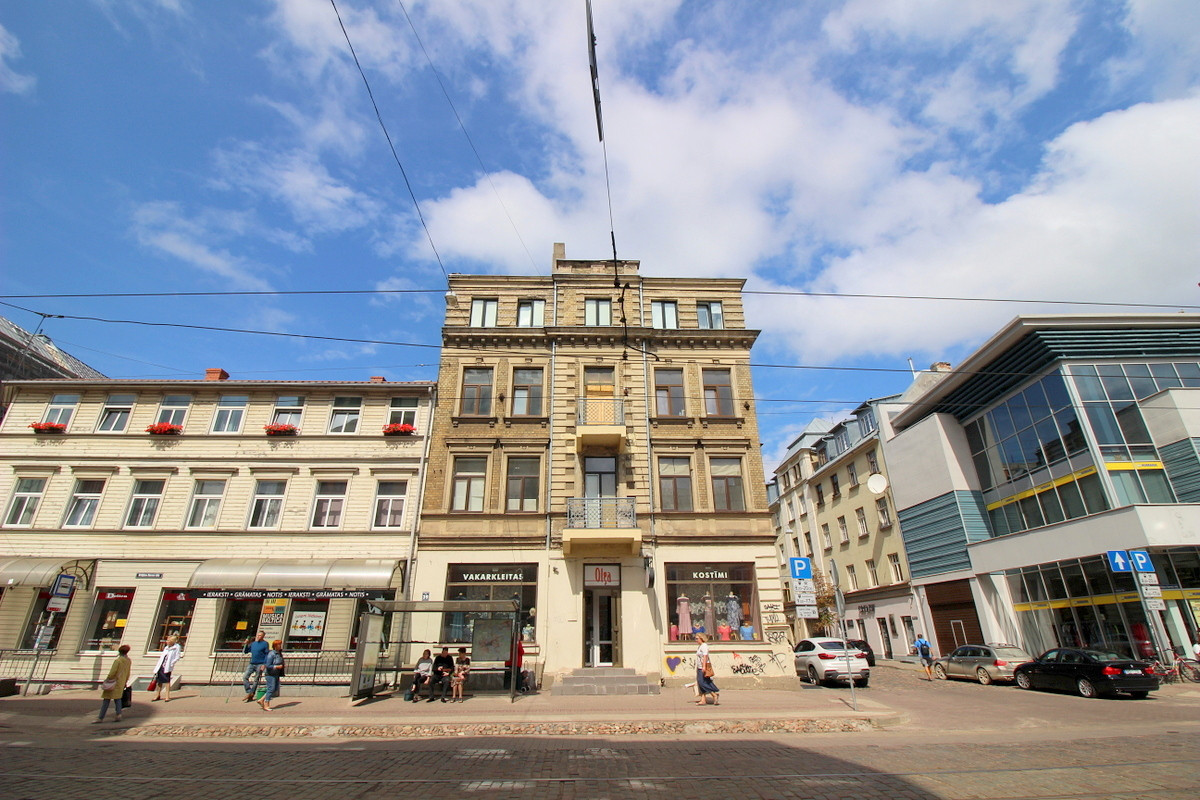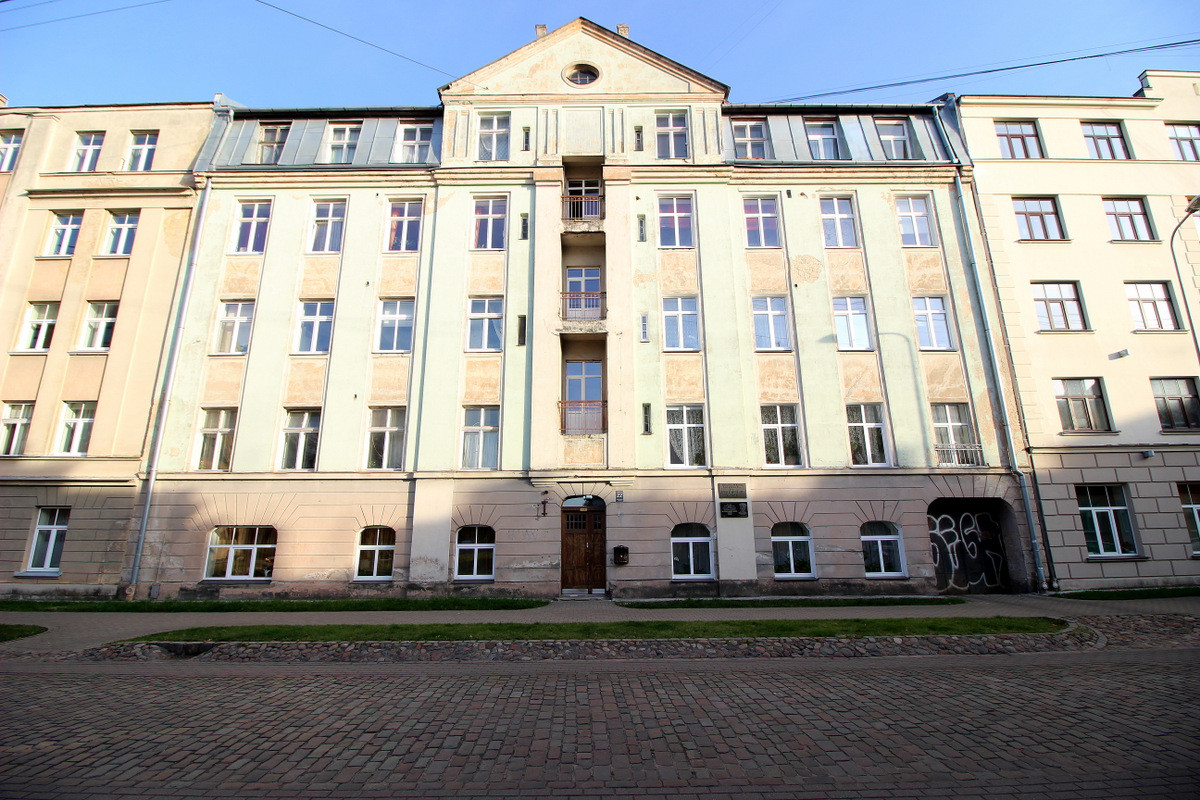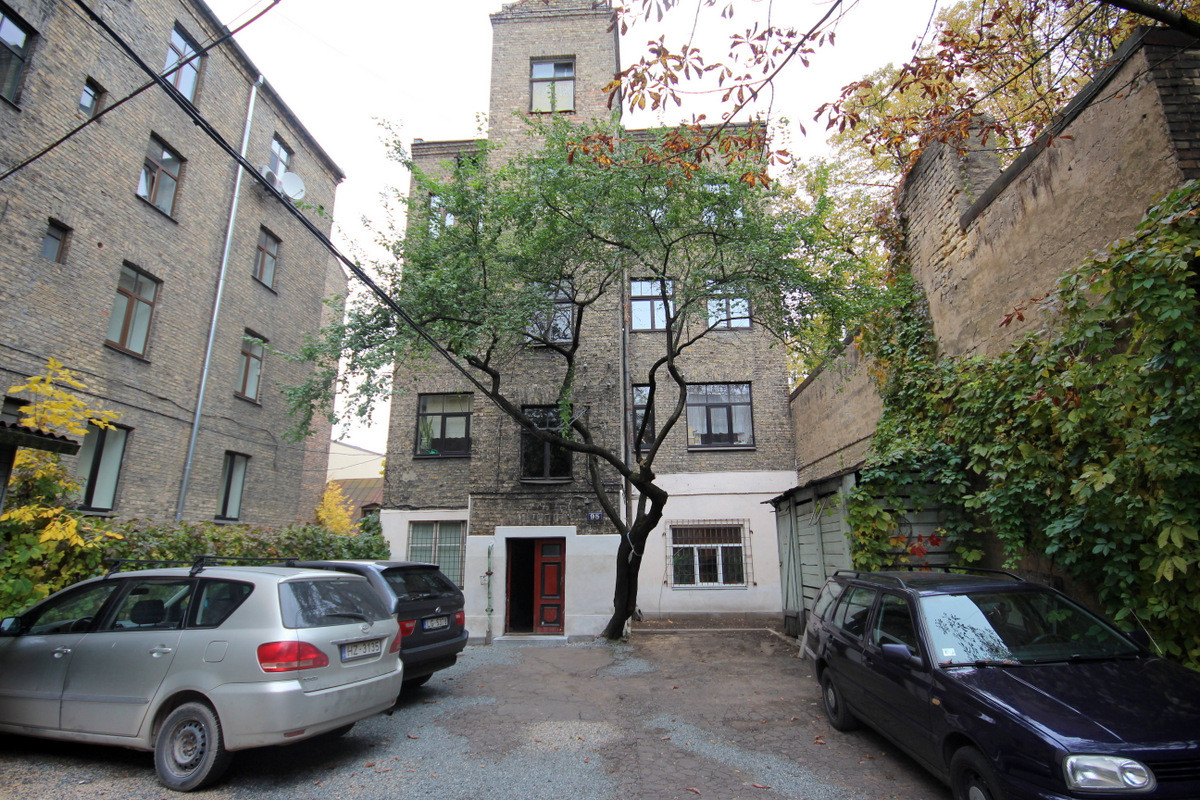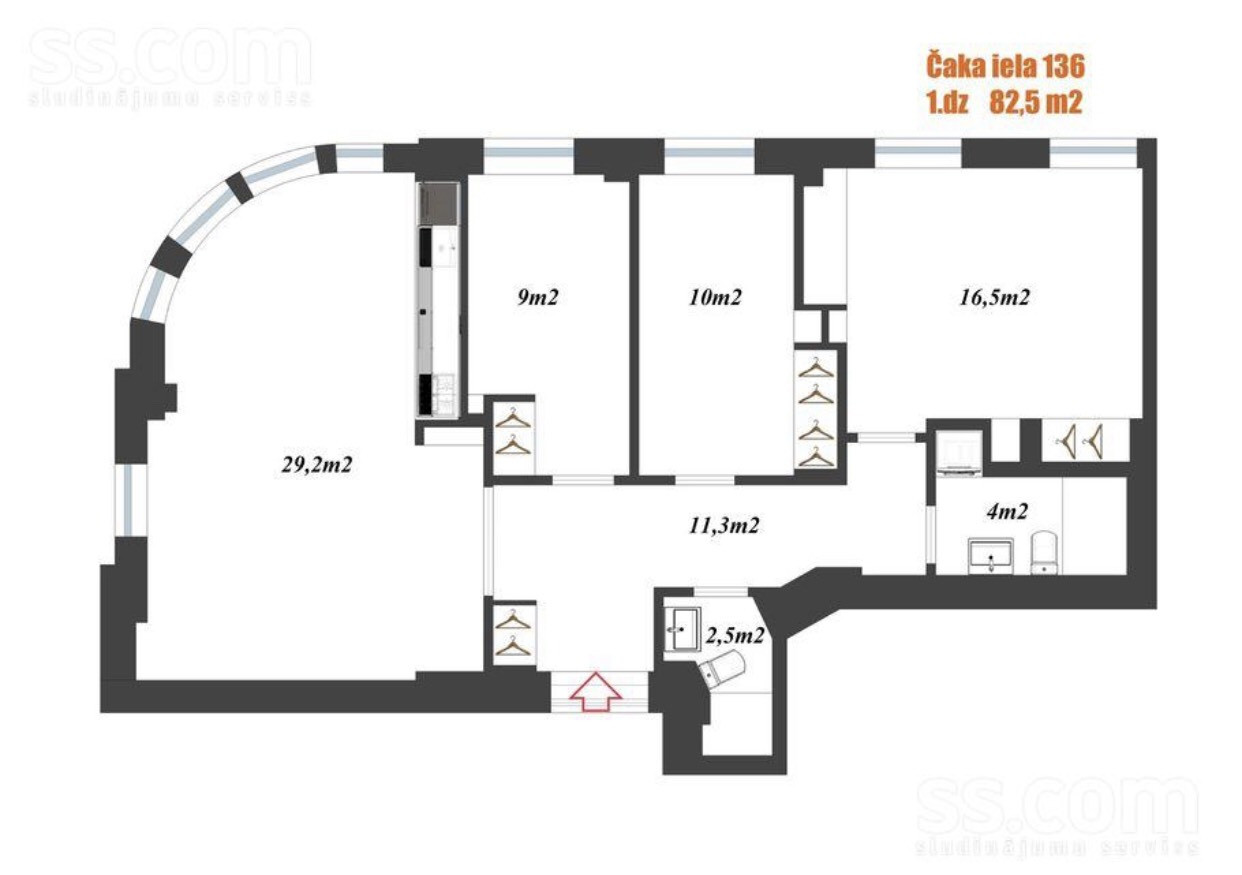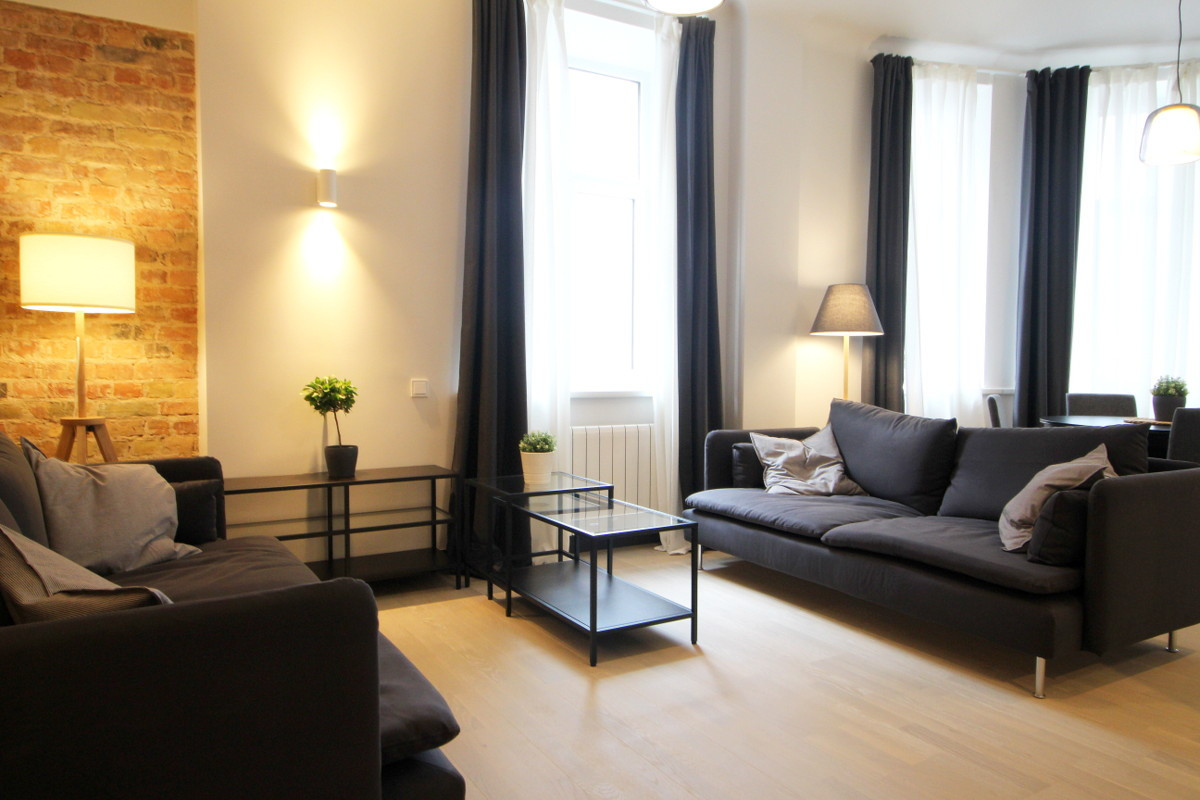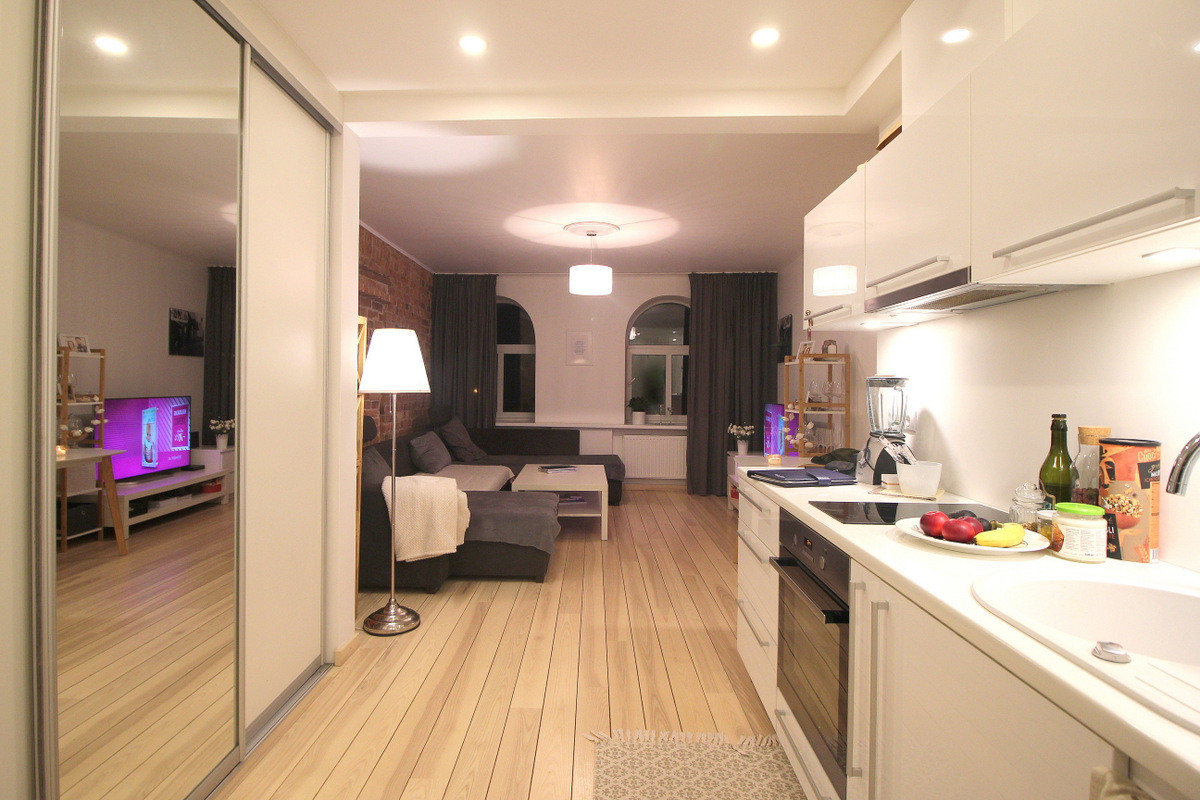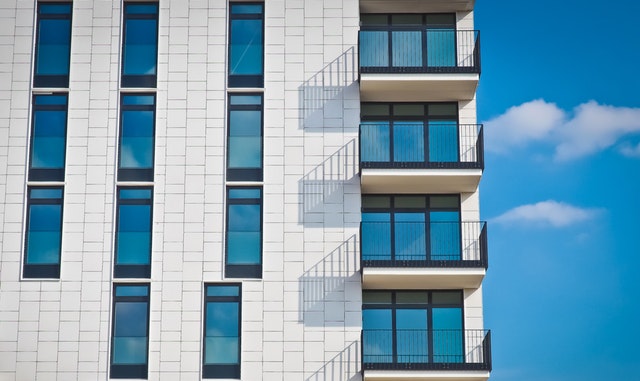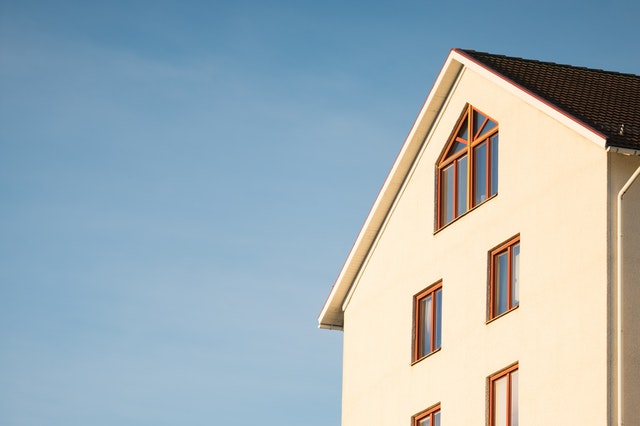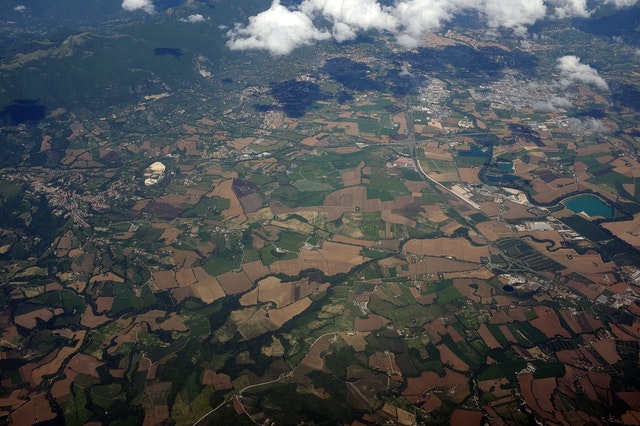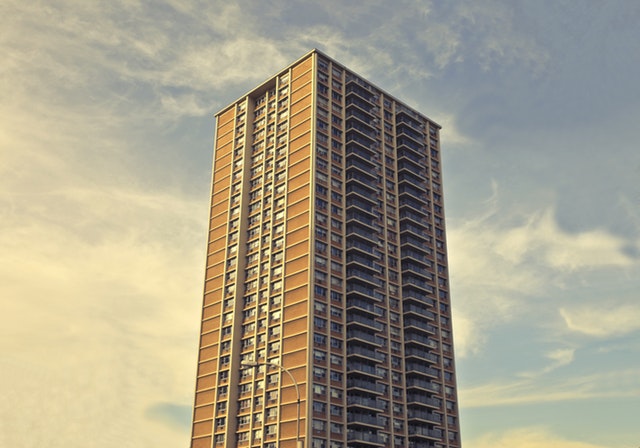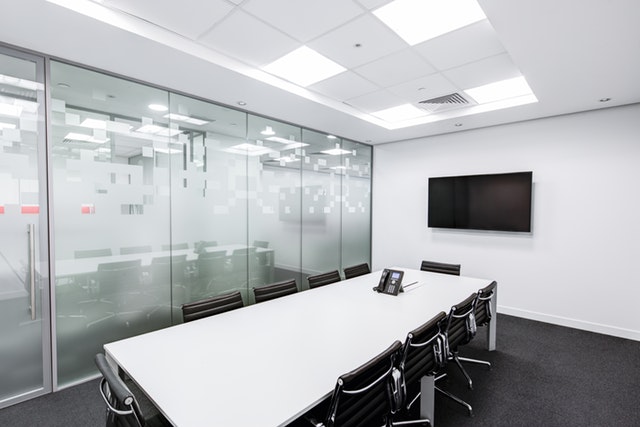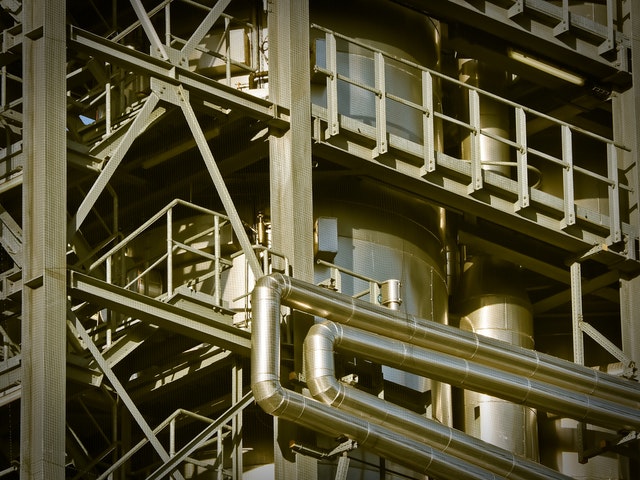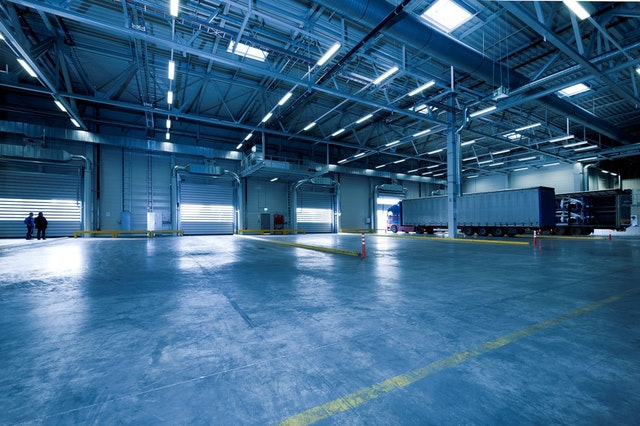Riga city housing: pre-war masonry building.
Pre-war apartment buildings were built in the period before the Second World War. They are mostly built of clay bricks and boulders, as well as other materials. The buildings of this project are usually up to six stories high. They are characterized by large rooms with separate, smaller rooms, these are the so-called daughter’s rooms or servants’ rooms. The apartments of these houses usually have quite high ceilings and the overall layout of the apartments is quite spacious. Considering that they are brick houses, they can have very thick walls, but also difficult to light, so it can be a little colder than other places. At the same time, they are safe and stable, they have survived even today and do not pose a particular threat, they are well preserved. These buildings are most often found in the center of Riga and in the historical center. These apartments have quite extensive redevelopment possibilities. You can either tear down partitions or create an open plan. It must be said that if the house is on the cultural heritage list, then any re-planning and modernization works may require permits and special preparation. These houses do not have elevators, but tend to have balconies or loggias. Houses often have two entrances, in the past, one for the owners, the other for the servants. This is not a typical project like series apartments, so there are no specific references about the apartment areas or the layout itself. Each apartment can be individual, depending on the house and location. These houses are also found in quite prestigious areas, which increases their price in the market. Pre-war buildings are quite common, but their prices can vary widely. To a large extent, it is the technical condition and location of the apartment that determines the cost of renting or buying such an apartment. Well-kept apartment, good location will cost a lot. Of course, the cost is appropriate if you consider that you are getting a large apartment in the city center. It has good thermal insulation, in most cases and the house is safe. Also, the visual appearance of the houses is usually very good, with exceptions, of course. The biggest benefit of living in pre-war buildings is their beautiful architecture and the life story of the building itself. The quality of the building’s construction and interior decoration was based on sustainability.
